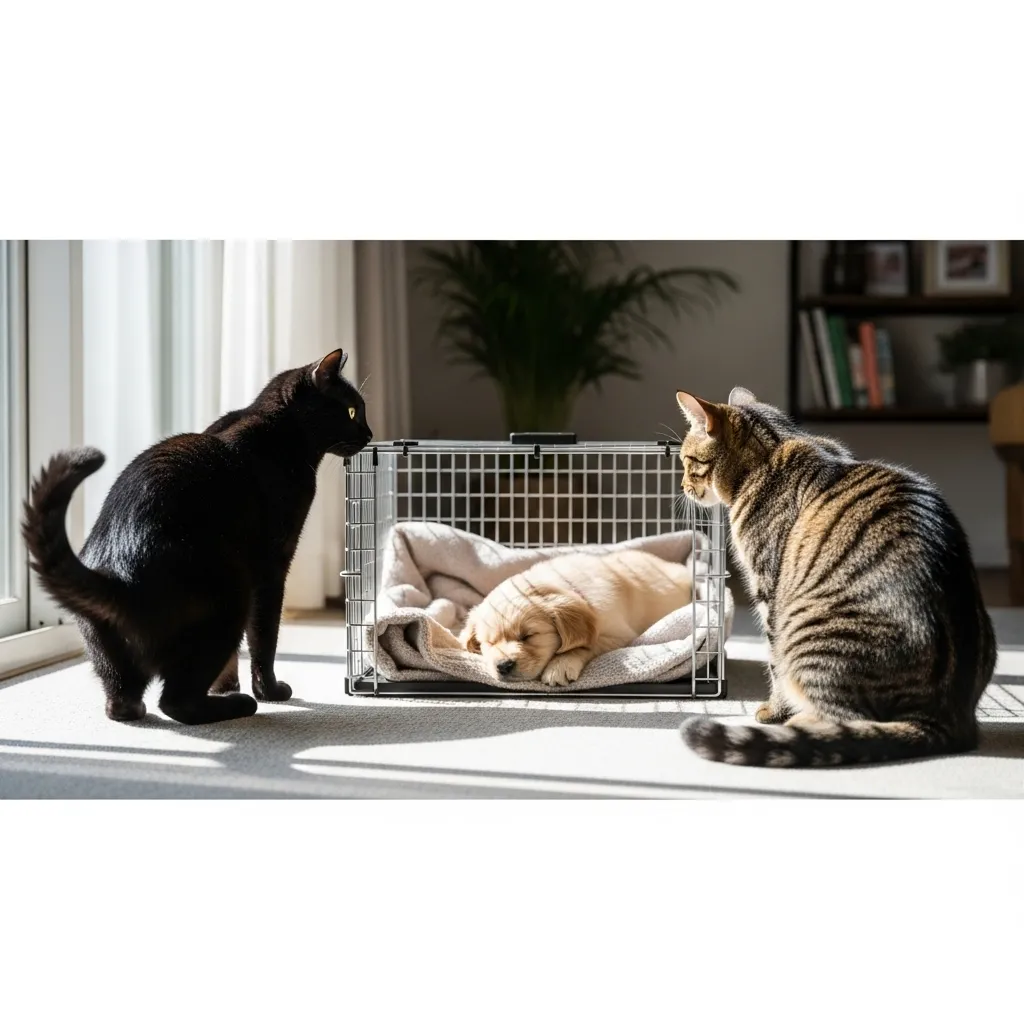
Building a Harmonious Home: Introductions and Multi-Pet Households
Bringing a new pet into a home that already has resident animals requires careful planning and immense patience. Rushing introductions is one of the biggest and most detrimental mistakes owners make, as a bad first impression can be very difficult to overcome. The goal is to create positive associations and allow the animals to become comfortable at their own pace.
The Decompression Period
Whether you have other pets or not, every new animal needs a decompression period. This is a quiet, initial one- to two-week period where the new pet is kept in a single, secure room with all their necessities: food, water, a bed, and a litter box or puppy pads. This allows them to acclimate to the new sights, sounds, and smells of your home without being overwhelmed. It’s a time for you to bond with them in a low-pressure environment before introducing them to the rest of the house or other pets.
A Step-by-Step Introduction Plan
The following steps are essential for introducing a new dog or cat to a resident pet. This process can take days, weeks, or even months. Do not proceed to the next step until all animals are calm and relaxed.
1. Scent Swapping: Animals communicate heavily through scent. Start by feeding the resident pet and the new pet on opposite sides of the closed door of the decompression room. This helps them associate each other’s scent with something positive (food). You can also swap their bedding or toys for a day so they can investigate each other’s smell without direct contact.
2. Brief, Supervised Visuals: After a few days of scent swapping with no signs of stress (like hissing, growling, or frantic barking), you can allow brief visual contact. Use two people for this. Install a baby gate in the doorway of the new pet’s room. One person can sit with the resident pet several feet away, rewarding them with treats for calm behavior. The other person can let the new pet approach the gate at their own will. Keep these sessions very short—just a minute or two at first—and end on a positive note.
3. Controlled, Neutral Territory Meetings: For two dogs, the first face-to-face meeting should be in neutral territory, like on a walk in the neighborhood. Keep both dogs on loose leashes and walk them parallel to each other, several feet apart. If they are calm, you can gradually decrease the distance. For a dog and a cat, the first interactions in the same room should be with the dog on a leash and the cat having a clear escape route, preferably to a high perch. Again, keep it short and reward calm behavior from both animals.
4. Managing Resources: To prevent conflict, ensure there are ample resources. This means separate food and water bowls, multiple litter boxes in different locations (the rule of thumb is one per cat, plus one extra), and plenty of toys. Resource guarding, where an animal becomes defensive over food, toys, or space, can be a serious issue. Feeding pets in separate rooms or crates can prevent mealtime squabbles.
Always supervise interactions until you are 100% certain the pets are comfortable and safe together. Never leave them unattended until this point is reached.














